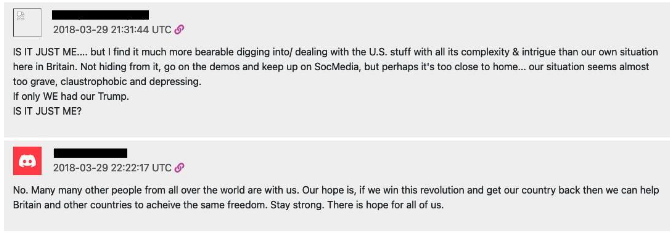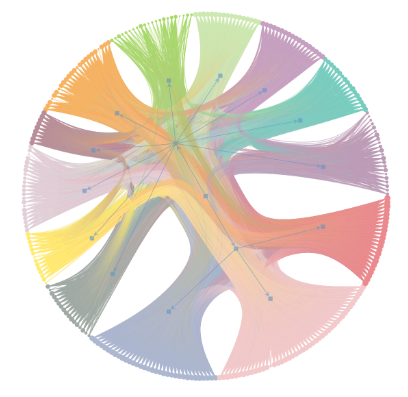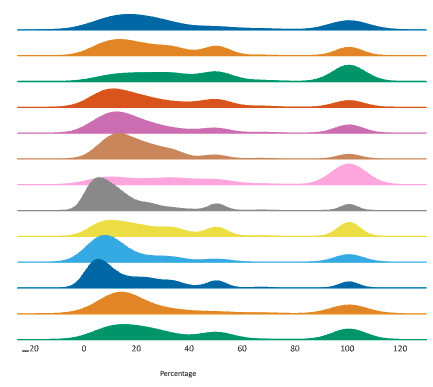Introduction
In August 2017, Charlottesville, Virginia, had its streets swarmed by white nationalists, klansmen and far-right militia in a demonstration that was known as the Unite the Right rally. The movement was sparked after the City Council decided to appoint a commission in 2016 to discuss the removal of the statue of former Confederate general Robert E. Lee from downtown Charlottesville. Participants were wearing military uniforms, brandishing Confederate flags and using slogans rooted in fringe ideologies. This event is often portrayed as a hallmark of the mainstreaming of a movement, once confined within niche communities, which now gathered enough manpower to amplify their claims and become a major political voice. The clash escalated when 20-year-old James Alex Fields Jr rammed his car into a counter-protest marshalled by civilian members of anti-fascist movements, killing one and injuring many others. The events left the city in a state of emergency and significantly compounded existing societal tensions.
In the aftermath of the event, investigations have underlined how fringe platforms such as Parler or Gab were used by members of the alt-right to coordinate and share political ideologies ahead of the rally. Many of those conversations also show a propensity toward a high level of violence, indicating the proclivity for violent behaviour from the attendees. More specifically, the instant messaging platform Discord, popular within gaming communities, was pointed out to be a hotbed of extremist activity among white supremacist groups and was widely used to plan the event.
With topics such as misogyny, racism and aggressive behaviour becoming more rampant within pockets of these user bases, gaming-adjacent services have been struggling to deal with a community whose legacy includes smearing campaigns such as Gamergate. In a 2022 report debunking the pre-conceived myth that gaming leads to violent behaviour, the United Nations Office of Counter-Terrorism stressed the role played by gaming spaces in the extremist landscape, mostly by offering a gateway where the lack of moderation often allows violent discourse to remain unchecked.
This Insight looks at the role of Discord in facilitating the organisation of the Unite the Right rally by bridging far-right communities. The events that took place in Charlottesville can be described as networked incitement – an instance where influential political figures leverage social media to urge their supporters to partake in political violence. The attacks on the US Capitol and Brazil’s attempted insurrection, both fuelled by online rhetoric in the wake of Trump and Bolsonaro’s electoral defeats, are similar examples of this phenomenon. Understanding how political actors weaponise online platforms for violent calls to action is therefore crucial.
Discord and the Unite the Right rally
Discord allows users to network via virtual communities called servers. Users can manage the visibility of their server to the wider Discord community, the rules enforced within the server and the channels it includes. While servers are by default public and can be queried via online search platforms, administrators can ensure that new members can sign up via invitation only. Due to its ability to offer voice and message communication channels and gaming-centric features, Discord is extensively used by gaming and tabletop role-playing communities to communicate with other gamers and developers. However, the platform’s anonymity and privacy features also made it ideal for users involved in criminal activity, such as selling illegal goods or leaking classified documents.
Previous studies aimed to map the presence of far-right groups on Discord, revealing a vast network of servers catering to extremist narratives, such as the ones that sparked the Unite the Right rally. However, researchers have little grasp on user behaviour across these servers, especially when assessing whether there is an organic connection between similar servers, or if they all act as siloed online spaces for a specific community.
To map the communities that emerged on Discord to amplify far-right narratives, I used Unicorn Riot’s archives of 291 Discord servers that all gravitated around the Charlottesville riot. While the Unite the Right rally was gaining traction online, Unicorn Riot journalists accessed Discord’s internal logs and retrieved records of the conversations from that time. This investigation into servers with over 140,000 unique active users sheds light on the social dynamics of online radicalised communities. Understanding how these groups function on mainstream platforms like Discord is crucial to mitigating their threat.
Community Structure
Communities included in the Unicorn Riot’s leaks display a strong affinity for popular movements within the far-right ecosystem. Aside from representing some of the social movements within the far-right (Boogaloo Boys, Proud Boys, QAnon), servers were also used to discuss prominent influencers within that political sphere, such as British YouTuber Sargon_Of_Akkad or political commentator Nick Fuentes, or to discuss other platforms catering to their narratives like 8chan and banned.video. Overall, the servers strongly aligned with Donald Trump’s political stances and made frequent mentions of popular MAGA tropes within the servers’ names (Blue Lives Matter, Official MAGA Server).
The Discord ecosystem is also not confined to the US: users from Germany, the UK, the Netherlands and many other Western nations are also involved in these communities, sharing similar talking points and political claims. The far-right on Discord embodies what former FBI director Christopher Wray calls a ‘salad bar of ideologies’ – many political and social stances, often contradicting each other, stitched together to create an overarching narrative that a community can rally around. One of these conversations can be seen in Fig. 1, which demonstrates a symbiosis between the US and UK political right, especially around controversial political opinions.

Fig. 1: Messages posted on a Brexit-related channel into one of the QAnon servers included in the leak.
A concerning trend that spans these communities is the growth of an organic far-right sphere on platforms like Discord, where smaller communities are connected via a dense network, exchanging information, spreading narratives and coalescing into a stronger social movement. To measure the cross-pollination between these communities, I created a network of servers where two servers strongly connected if many users were active on both. This resulted in a dense network, shown in Fig. 2, which indicates regular inter-community interactions within the far-right on Discord. Some servers give rise to tightly connected communities, here shown in the same colour, highlighting that they share a strongly similar user base. Most notably, the largest clusters strongly revolve around the narratives that initiated the Unite the Right rally: the biggest cluster (pale pink) mostly contains servers discussing the ‘Red Pill’ narrative and some influential members of the male supremacist movement, such as Nick Fuentes. The two second-largest clusters (pink and pale blue in the network) revolve around popular conspiracy theories in right-wing narratives and neo-Nazi communities, respectively.

Fig. 2: Cross interaction network of the servers included in the UnicornRiot leaks. Two servers are highly connected if they have a larger number of users who are active on both. Servers are clustered and coloured with respect to the strength of their links within the network.
This analysis only considers active users, i.e. those who posted at least once on a channel. We observe a high variance in user engagement, echoing a previous investigation on QAnon communities on Reddit. Communities are likely to include a few prolific members who influence the group’s collective identity and provide the main topics of conversation. For each channel, I computed the percentage of the total active user base contributing 50% of the messages posted within the community. This was done to measure the disparity in engagement between the dedicated members of the group and those more marginally involved in the community, similar to user groups studied in previous research on conspiracy theories conversations on Reddit.

Fig. 3: Distribution of the percentage of users within each channel who contributed to 50% of the total activity in the community. Each ridgeline represents one of the clusters of servers identified within the interaction network.
As shown in Fig. 3, for a large majority of the channels included in the analysis, a significant portion of the content shared across the community is created by a handful of users. This phenomenon is especially prevalent in channels with an active user base (more than 100 users actively contributing to the channel), indicating a strong divide between the readers and the broadcasters in the community. Out of the 651 channels with more than 100 active users, 60 have half of their content created by less than 1% of the participant pools. That kind of leadership style – sometimes called ‘despotic leadership’ – leads to a pyramid scheme where most members are only passively consuming the information their peers provide. Such a social structure has also been identified as a recurrent pattern among adherents of conspiracy theories, as it builds a symbiotic relationship between the believers and the intellectuals who are fuelling the movement.
How Online Narratives Lead to Political Insurrections
These network structures highlight another pernicious effect social platforms can have in radicalising their users. By offering wide access to information online, they catalyse crossovers between like-minded communities and create new pathways for users to find narratives that fit their worldview. This online phenomenon, since formalised in academic studies, stresses the underlying risks for social platforms to facilitate the growth of a conspiracy community – a group of individuals interconnected through their shared beliefs in non-normative political behaviour.
The Charlottesville network particularly underlines how dangerous online anti-democratic movements can become when combined with a social hierarchy where there is a strong chasm between readers and broadcasters. Influential community members can leverage their social capital to promote violent narratives – sometimes tied with financial gains – while gaining access to a larger pool of followers through their interconnections with other servers. As such, these micro-celebrities can mainstream their discourse and rally hundreds of their supporters from across the nation to mobilise. Discord, meanwhile, is none the wiser about the role they played in hosting these conversations.
Conclusion
The social dynamics that led to the Unite the Right rally have been identified in many instances where influencers leveraged social platforms to incite their followers to target their political opponents. In 2020, far-right militia extensively shared their plot to kidnap Michan governor Gretchen Whitmer on Facebook, and lifestyle influencers on Instagram were pivotal in sharing a child trafficking conspiracy theory against homeware seller Wayfair in 2020. The analysis shared in this Insight highlights how social platforms can unwillingly offer an outlet where cross-pollination between fringe communities leads to the growth of a stronger online cohort, with a few members at the nexus of the narrative.
The pervasive influence of social platforms in radicalisation underscores a pressing need for vigilance within the tech industry. Despite advancements in content moderation and establishing Trust and Safety teams, we are witnessing the proliferation of an increasingly tech-savvy online extremist population adept at evading public scrutiny. These communities ensure their messages resonate widely while evading detection by policymakers and law enforcement agencies. However, there is reason for cautious optimism as innovative solutions harnessing robust analytical potential are being developed.
Discord, like many other major social platforms, releases a quarterly Transparency Report detailing the number of automatic and manual interventions to take down offensive and/or harmful content. Discord’s latest report underlines a surge in the removal of servers and accounts associated with violent extremism. This has been attributed to its partnership with the Global Internet Forum To Counter Terrorism (GIFCT). Through enhanced technical capabilities, Discord effectively and proactively tackled harmful discourse surrounding the January 6 insurrection, preventing the platform from becoming a primary organisational space for the rioters. However, the broader digital ecosystem requires similar upscaling efforts to counter the threat of online extremism. As these groups exploit vulnerabilities across platforms, a unified approach is essential to prevent their calls for violence from reaching large audiences.
Amin Mekacher is a PhD candidate in the Department of Mathematics at City, University of London. His research revolves around mapping the emergence of new outlets within the alt-tech ecosystem and the user engagement that spans across these platforms. His work focuses on far-right narratives and their propensity to lead to violent discourse being amplified within online fringe communities.
